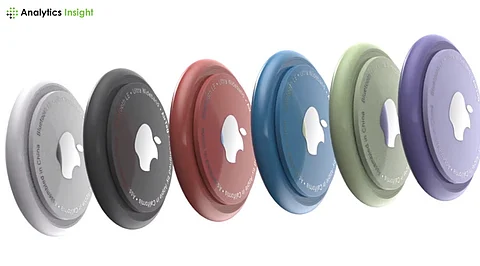

Apple unveils the AirTag 2, which features an ultra-wideband chip that extends its tracking range immensely. Enhanced anti-stalking features are included in the device, along with integration with the Vision Pro headset. The new AirTag will be available in mid-2025.
Apple's AirTag, a tiny tracking device for the things in your daily life, was released in 2021 and became an instant go-to for finding keys, bags, and more. A second-generation AirTag, internally codenamed B589, is now on track to release in mid-2025 with major upgrades. Rumors include a more extensive tracking distance, enhanced privacy features, and support for Apple's Vision Pro. This story explains the primary enhancements and their implications for customers.
AirTag 2's most stand-out feature is its second-gen Ultra-Wideband (UWB) chip, which it first introduced as part of iPhone 15 and Apple Watch Ultra 2. The chip increases the tracking distance threefold over the initial AirTag 10-30 meters, potentially up to 60 meters (around 200 feet).
Accuracy Location, which displays distance and direction to an object, will be effective over larger distances, helping to find misplaced items in wide areas such as airports or parks. The upgraded chip also supports better accuracy where there are fewer Apple devices around, providing a stable track of suitcases, bicycles, or pets.
Privacy issues have surrounded AirTag since release, with others being used illegally for stalking. The original AirTag's speaker, which emits beeps to warn surrounding users about a mysterious tracker, was vulnerable to removal. AirTag 2 remedies this by making the speaker tamper-resistant so that it continues to be heard when detached from its owner.
This does more to fortify anti-stalking safeguards, supporting software notifications warning users of unknown AirTags. These new releases seek to strike a balance between functionality and safety, minimizing misuse risk without sacrificing the core function of the device.
It is rumoured that AirTag 2 will be integrated into Apple's Vision Pro headset, an effort that is linked to spatial computing. The new UWB chip potentially would facilitate motion tracking, where AirTags act as anchors for augmented reality (AR) experiences.
For instance, several AirTags attached to an object or body locations may enable motion capture for gaming or creative purposes, as in the case of technologies like Sony's Mocopi. Although the details are yet to be known, this feature would potentially broaden AirTag's use beyond mere object tracking, moving with Apple's move towards immersive technologies.
AirTag 2 is not expected to see any significant design overhaul, with the familiar coin-sized, silver appearance remaining intact. The slim design fits easily into pockets or clips onto keychains, although some wished for a card-like, thinner design or a hole for a keyring. The device will again utilize a replaceable CR2032 battery, with rumors of better battery life than the present one-year mark. A louder speaker is also expected, helping to find objects hidden close by, such as under furniture or in purses. These adjustments sharpen the initial design without changing its simplicity.
AirTag 2 is expected to be released in May or June 2025, perhaps unveiled at Apple's Worldwide Developers Conference (WWDC). Production tests with Asian partners are being conducted, indicating production is going as planned. The postponement from previous rumors of a 2024 release was due to overstock of the initial AirTag, which Apple wanted to clear before releasing the new one.
The mid-2025 release coincides with other product updates, such as the iPhone 17 series, making it easy for AirTag 2 to be included within Apple's ecosystem.
The original AirTag retails for $29 for one or $99 for four, usually on discount. The price of AirTag 2 is not confirmed but a minor bump is likely considering the new chip and hardware changes.
The device will work with iPhones and iPads running iOS 14.5 or later, using the Find My app for tracking. No major design revamp means current accessories, such as keychain holders, will likely be compatible, keeping the cost low for existing users switching to the new device.
AirTag 2 follows through on the success of the original with functional improvements. The longer range makes it easier to locate misplaced items, while anti-stalking features cater to privacy issues. Integration with Vision Pro suggests a glimpse of things to come with AR and spatial computing.
Without changing the tried-and-tested look and improving crucial features, AirTag 2 is set to be a consistent, handy tracker for daily use. With the 2025 release date looming, anticipation builds for a product that makes losing items less of a hassle and continues to keep Apple ahead of smart accessories.
